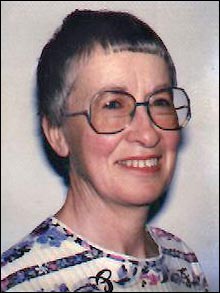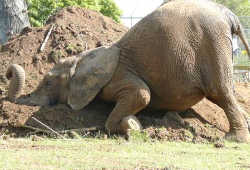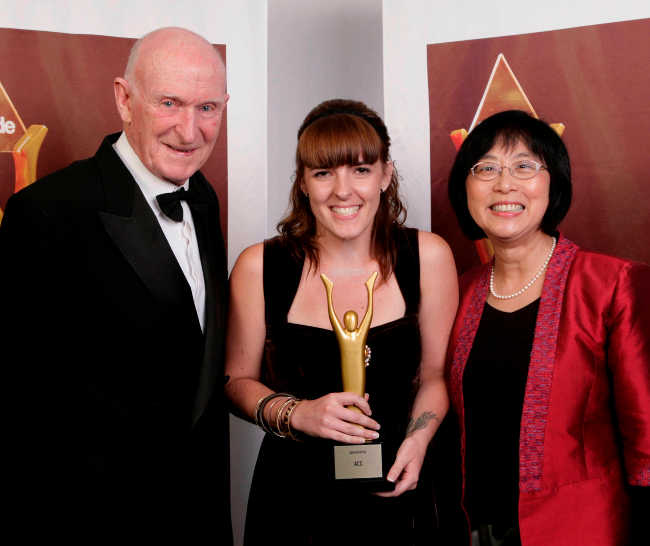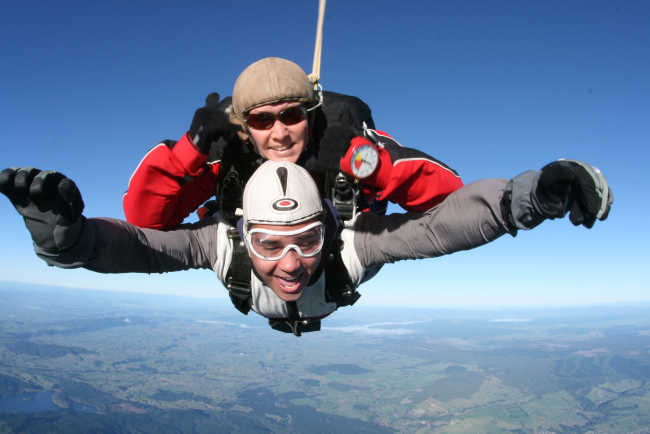– Dorothy – 3/7/97
An interview with Rhona Thorpe. Part 2 – Learning to manage OOS/RSI. If you have not already, read
Part 1 first.
Help from a specialist physiotherapist After four months of increasing pain, in August Rhona heard of a physiotherapist who specialised in OOS/RSI – Pieta Valentine of Total Overuse Management in Christchurch. Pieta explained that sometimes OOS/RSI extends further than one localised area, and becomes diffuse. This could then explain the spread of the pain in Rhona’s case.
After only a few sessions with the physio Rhona believed that she was on the right track to recovery. She initially had three treatments a week.
Understanding the condition The physio explained to Rhona what was causing the pain and how the

|
| Rhona |
treatment was developed to relieve it. With increased understanding Rhona could now see more clearly what OOS actually is. She described it to me as a jamming of the capacity to relax. For instance after the muscles are tensed for an action like turning on a tap, they remain in a state of tension.
Once sufferers are aware of this problem they begin to realise that they are using unnecessary tension in posture and in positions of the hands, even when they are supposedly in repose.
The tension in the muscles causes a large build-up of lactic acid which cannot get away and this can eventually damage the muscles.
Rhona believes that the heavy build up of lactic acid and the sudden worsening of the condition may have been increased by the tension caused by a very serious illness she suffered in the previous year. She had left her full-time job just before that.
Two beneficial features of the physiotherapy The first was that the treatment was the gentle but very specific pressure which the physiotherapist put on key areas of the arms, neck and shoulders.
The second was that she worked on trigger points – something so complex that the book on treating those in the arms and upper body is a very large volume. These are the points where the lactic acid starts to accumulate, thus triggering the pain. (General massage had worked only briefly because it was not specific enough.) By the time Rhona went to the physio there were clearly discernible lumps around several trigger points.
Working towards self management of the pain At first the physio manages the pain for the patients, and then as they get past the worst of the pain and are more confident she teaches them to manage it for themselves.
Pieta works where possible with the patient sitting, the hands relaxed, the arms on a pillow. The patient should feel the blood flow, have an increased awareness of the surge of the blood and the consequent moving of the lactic acid. Nine months of that massage has been a material factor in the recovery though the growth in awareness has been very gradual during that time.
Teaching a family member to help Pieta taught Rhona’s husband, Hugh, to do the massage. He describes it as a rhythmical stroking. She taught him through an hour of discussion, explanation and demonstration, followed by his massaging Rhona under her supervision.
For the first month Rhona had treatments three times a week, then from September to November twice a week, then once a week, and for most of this year once a month unless there was a flare up. The fact that Hugh has been able to give massage once or twice a day has been a major factor in reducing the time with the physio.
What changes has Rhona had to make in managing OOS/RSI?
- She has had to change her work habits to include relaxation of her hands, wrists and arms every three minutes for ten seconds.
- She has had to buy two new chairs and check her sitting position when working or relaxing. She must no longer sit on a stool.
- She and Hugh have changed to single beds.
- She has had different taps fitted with bigger nobs and larger flanges.
- She uses new and sharper tools in the garden.
- Thanks to experimentation with the position of the car seat she has avoided changing the car.
- The household chores have had to be shared differently as she cannot cut hard vegetables or do the vacuuming.
- She has her groceries packed with a small quantity in each bag as she cannot lift heavy loads.
- She has developed protective movements to reduce the pain involved in shaking hands.
Changing habits of action and work cannot be done quickly and even for the conscientious patient may take at least a year.
Adjustment for the sufferer’s partner and family All these changes affect the lives of others in the houshold, especially a partner, and these people have to be flexible to accommodate the changes and give time to regular massages as well. OOS/RSI tests the patience and emotions of everyone involved.
What is Rhona’s advice to others developing symptoms of OOS/RSI?
- Take action quickly.
- Don’t think that it is just something that has to be tolerated. To go to the doctor with early symptoms is not crying wolf.
- Go to a doctor quickly, preferably one who has some awareness of OOS/RSI.
- Ask for a referral to a physiotherapist who is someone you can relate to and who specialises in treating this condition. Some physios now offer training to managers on how to set up the workplace to minimise risk.
- Check on whether you can get the Accident Compensation Corporation or your health insurance to carry the cost. (Rhona’s health insurer had cut cover for physiotherapy after she joined. ACC did not consider that there was clear evidence that her former occupation as an education adviser had caused the symptoms. This meant that she had no assistance with the cost of the treatment.)
- Ask the physio if she/he could teach someone in the family or a friend to give the appropriate stroking massage in the key areas.
- Join the New Zealand OOS Support Group in Christchurch. Phone (03) 388-9380. Ask for their resource kit. Ask if there is a group in your area. (Last year the group had twenty eight members. This year it has ninety two!) They now give the names of specialist physios.
Three stages of OOS/RSI Rhona described the three stages of OOS/RSI
Stage 1 – some symptoms at the end of work. Easily reversible. At this stage a little massage and learning self management techniques, such as exercising the hands for ten seconds every three minutes, can bring an improvement quite quickly. As ACC pays for initial treatment, it is important to make the most of this.
Stage 2 – more symptoms and pain at night. Still reversible.
Stage 3
– pain evident day and night even when resting. At stage three the condition is much harder to reverse.
Delay aggravates the condition. To delay in seeking treatment can cause physical, emotional and spiritual damage. Taking action earlier means the recovery is faster, self managment works better, and the sufferer experiences less depression. Even with early treatment patience is required as improvement is not immediate.
The keys to Rhona’s successful management of OOS/RSI She considers that finding the right physiotherapist helped her turn the corner and since then Hugh’s support and her own efforts have kept the symptoms at a manageable level.
She believes that others will recover much more quickly if they TAKE PROMPT ACTION TO GET HELP.
People Making Changes Main Page




